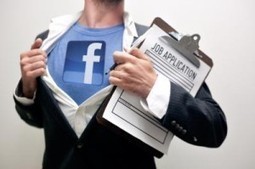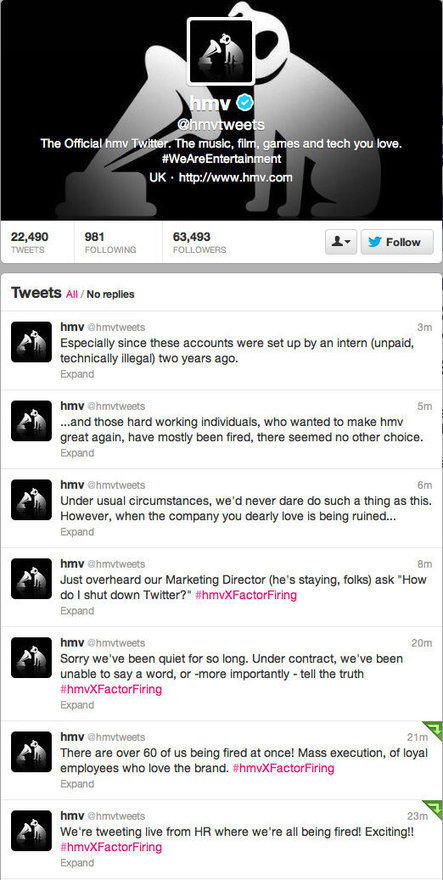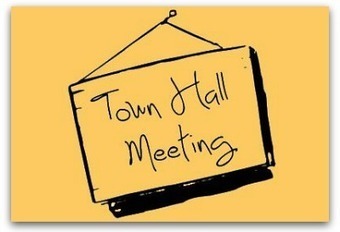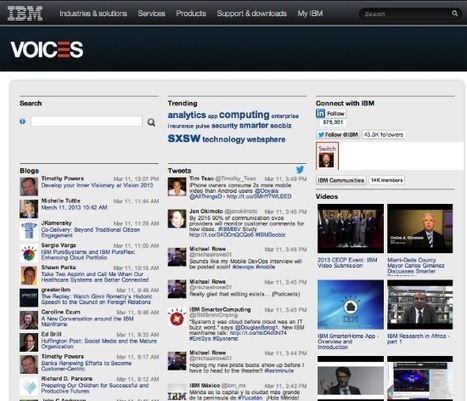 Your new post is loading...
 Your new post is loading...
Leaders of reorgs typically fall into one of two traps when communicating with their employees. We’ll call the first one wait and see and the second ivory-tower idealism. Perhaps you have seen one, or both, in your own reorgs.
In the first trap, wait and see, the leader of the reorg thinks everything should be kept secret until the last moment, when he or she has all the answers. The leader makes the reorg team and leadership swear to secrecy and then is surprised when the news leaks to the wider organization (it always does, we’re afraid). As the reorg team starts to engage with the rest of the organization, the rumors round the water cooler increase: “They were asking what my team does”; “I had to fill in an activity analysis form”; “I hear that 20 percent of jobs are going to go.” Everyone thinks the real reason for the reorg is job losses (whether it is or not). The leader, desperate to get in control of the situation, pushes the team to develop “the answer” so that he or she can tell the organization. Without an “answer,” the leader feels that any communication would come across as defensive. At most, the executive approves some question-and-answer sessions on the reorg. But a full-scale communication needs to wait. Eventually, the leader has the answer: the reorg team produces a high-level org chart. The leader then announces the new organization: here are the new leaders, here is the structure, some job losses are necessary, but this is going to help us deliver fantastic results. Employees, hearing this, hear only that their boss’s boss’s boss is going to change and that some of them are going to lose their jobs. Nothing their leader has said counters the impressions they formed at the water cooler.
Ivory-tower idealism fares little better. In this version, the leader of the reorg is finally getting a long-achieved objective: all the issues of the old organization will finally get fixed; everything the leader wanted to do, but was held back from, can now be achieved. The leader can barely contain the excitement. So psyched up by the possibilities that the reorganization offers, the leader decides to start the process with a webcast to all staff, telling them about the exciting business opportunities it will open up. The leader follows this up with a series of walk-arounds in the major plants and offices, discussing the opportunities and getting input on some of the challenges that people face in the organization today. The leader puts a personal blog on the company intranet....
Here are 5 benefits of using a mobile app for your internal crisis communications - and which industries and types of organizations would best benefit.
Intranets are a great tool for large organizations that have offices all around the country and the world, but what about when you have workers on the ground? Workers on the ground don’t necessarily have a computer in front of them at all times, but what they definitely do have is a mobile phone. Creating an app designed specifically for your internal (crisis) communications will allow you to:- Access and reach each and every member of your team, no matter where they are at any given time – and all at once...
Can you spot the differences between these two statements? 1. "You're required to create three videos a month." 2. "If you make the effort to create three videos each month, you'll get your own video equipment and software to use for free. Not only that, we'll recognize you as a leader in the company." It's like night and day, isn't it? According to Paolo Tosolini, director of emerging media at Run Studios, all it takes is a little incentive—a little bit of making video production into a game—to get employees excited about bringing their expertise to their company's video messaging. It's a good way to get employees to watch important videos, as well.
In a digital and social age, pipes are less important. People are the channel. You don't own or rent them. You can't control them. You can only serve and support them. This new world is disorienting because pipes and people work very differently as channels. Pipes flow out; people flow in. Content is pushed out through pipes, but pulled in through people. This reversal is shifting the balance of power. Individuals have access to information, tools, and resources once reserved for institutions. Externally, this means a shift in the relationship between customers and brands. Internally, this means breaking down the silos that once divided functions and departments. What used to be a hierarchy with the company at the top is now a network with the customer at the center. For marketers, this of course changes everything. As part of an awards program that one of us (Cara) created and the other (Mark) helped judge, we had the opportunity to see how hundreds of top marketers in Silicon Valley are engaging customers and growing revenue in this new era. The two most important principles that emerged are that customers make the best brand advocates, and entire organizations make for the best marketing teams....
As the discussion around social media evolves to social business, the social employee is becoming more and more important to the future of marketing... ... The current challenge facing businesses today is this: you can’t communicate externally unless you communicate internally. Sounds simple, right? But, unfortunately, business culture over the last 30 years (or even longer) has tended to prize cutthroat competitiveness and information hoarding as workers attempted to climb over each other in order to get to the top. So how do we change this? How do we build cultures where transparent internal communication and information sharing is prized above all else? Real culture change must come from all levels of the organization, but it must be driven and modeled by the executives in the C-Suite. Successful organizations in the new business climate have dynamic, engaging social executives who know exactly how to fuel and empower their employees and show them what it means to be social. Executives must understand that “do as I say, not as I do” won’t cut it among today’s workers. If they expect their employees to adopt new social habits, they must lead the way and model those habits first....
When the rumblings of an organizational crisis begin, a skilled communicator understands how critical their actions are in ensuring employees make it through the process as engaged and informed as possible. Failing to provide enough knowledge or context to your workforce could have damaging results for your company. Take the case of HMV. The entertainment retailer had a social media meltdown recently when staff took over the company's Twitter account to express anger at being fired [click on the image below to see the tweets in full]. Employees “live blogged” their own sacking on the site and HMV moved to delete the posts from the @hmvtweets account, which broadcast the news to its 60,000+ followers.... To keep employees engaged through the crisis process and protect both internal and external reputation, there are key actions you can take....
The chain reportedly asked managers to categorize employees as "green," "yellow" or "red," for targeting layoffs. Communication experts say the system is flawed.... In January, 5,500 Penney in-store employees were laid off. Another 300 jobs were cut at its headquarters in Plano, Texas. This isn't the first case of a company's using traffic-light colors as code for an employee's status. In 2010, telecommunications company Everything Everywhere faced harsh criticism for indicating whether employees could be laid off or not with red and green visual aids given in informational packets. JC Penney isn't disclosing the light system to store employees, but communicators say this idea is just as bad....
Even with Citigroup’s huge job cut plans announced Wednesday, Hewlett-Packard Co (NYSE:HPQ) remains the leader in corporate job cuts from U.S.-based companies in 2012, according to data from Challenger, Gray & Christmas Inc. Back in May, the ailing Palo Alto, Calif.-based tech giant said it would cut 27,000 jobs to save up to $3.5 billion. H-P contributed to May being the peak month in 2012 for job-cut announcements with more than 61,000 and pointed to computer companies as one of the most vulnerable industries of the year. Shares of H-P are down more than 45% for the year....
...I’ve written before about the value of your employees, and the very smart Leon Noone has shared his thoughts on the value of looking after your employees by creating the right culture and expectations from the start, as well as continuing to live by them. Yet so many businesses miss this, and instead talk a good talk about customers while missing the walk when it comes to internal customers – your employees. They’re the folks that represent your brand in public; they’re the folks that determine the customer experience; they’re the folks that keep the wheels turning. The importance of having the right culture and making sure there’s a good fit on both sides – brand/employee and employee/brand – is evident, as highlighted in this article from Forbes...
The profession and perception of internal communication (Internal Comms or IC) has undergone many changes over the years, moving from newsletter writers to trusted business advisers. Or at least that’s what we hope. Much work has been done, but there’s still a journey ahead. However, it’s the area of social media and its role for and in internal communications that is the current bump in the road for many. I’m going to look at 10 reasons why internal comms professionals should use social media and share some thoughts to help you make smart choices....
CEO David Siegel violates every rule of employee communication, tact and engagement in a companywide email signed "your boss."... This week, however, Siegel's name is in the news for an excess of a different sort. On Monday he sent his employees an email that is so crass and so over the top that even the gossip news website Gawker felt compelled to check out if it was real. Sadly, it is. Siegel confirmed it. "If any new taxes are levied on me, or my company, as our current President plans, I will have no choice but to reduce the size of this company," he wrote to employees. "Rather than grow this company I will be forced to cut back. This means fewer jobs, less benefits and certainly less opportunity for everyone." The hardcore Republican Siegel simultaneously defends his wealth and whines about what it took for him to amass it. He rails against the government, news media and taxes, as well as the "unproductive" people he believes benefit from government aid. He advises employees: "The economy doesn't currently pose a threat to your job. What does threaten your job however, is another 4 years of the same Presidential administration. Of course, as your employer, I can't tell you whom to vote for, and I certainly wouldn't interfere with your right to vote for whomever you choose."... [A poor example of CEO communications and leadership in my view ~ Jeff]
a case study from Blogwell NYC... ...Last month, Dow Chemical’s Abby Klanecky spoke at Blogwell NYC about developing its in-house scientists into well-respected social voices (check out the play-by-play on SocialMedia.Org). The decision to turn to its scientists came after the company realized that while the nation’s unemployment rate is hovering between eight and 10 percent, there are still 1-2 million open jobs in science – yet only 26 percent of the country is currently qualified for these positions.
By building social awareness about the opportunities within science, Dow Chemical could help secure their future as a home for the top talent in the industry, as well as encourage a younger generation to explore opportunities within the field.
While the concept of turning scientists into socially savvy advocates seemed like a great solution, the reality of taking these traditionally internal professionals with minimal social knowledge and turning them into ambassadors for the brand presented several challenges....
[A unique social advocacy strategy seems to be paying dividends for Dow ~ Jeff]
Corporate communications heads agree (82%) that discussions in social media and social networks can impact on a company’s overall reputation and licence to operate, but are split on how seriously it should be taken. Forty per cent said that criticism in social media channels was taken too seriously while 46% disagreed....
|
Stakeholder communication: It is simply not enough for an agile product development organization to create great code and ship the resulting product like a clockwork. You also need to talk about, particularly in the beginning of your agile transition. Marketing the agile journey of product and engineering to the rest of the organization—and thus getting their buy-in—is a critical success factor to step up the game: You want to become agile, not doing “Agile”. So, learn more about ten proven stakeholder communications tactics that contribute to making this happen....
I have evaluated dozens of CEO/executive town halls. As idealists, when we plan these events we envision a turn-of-the-century town hall during which passionate employees engage in vigorous debate with organizational leaders.... Most forums have too much content and a lengthy presentation with too much detail. In addition to substance, our leaders tend to be too positive and rarely negative, and employees don't think they are getting the truth. This sort of comment is heard: "That is not the real strategy; the real strategy happens behind closed doors." The good news is that employees tell me they really do want to know and understand strategy and what is impacting the business. They just don't believe that happens in leader forums. Senior executives tell me they want to know the best way to share their direction and strategy for the organization. Employees tell me they want the truth. They want unscripted answers and to participate in a discussion about the competing demands placed on the business....
Prescient Digital Media's 2013 study found the implementation of social intranet tools on the rise at most businesses, but satisfaction is quite low. Why aren't employees and executives happier? The firm's 2013 Social Intranet Study found that 76 percent of the companies surveyed use instant messaging, at least in some limited way. About 75 percent use blogs. Around two-thirds have wikis, discussion forums, and user comments. It's fair to say social tools are being used widely. However, only 19 percent of organizations rated their social intranet tools as good or very good. Even fewer executives, 17 percent, like them. Toby Ward, president of Prescient Digital Media, says the tools are easy to come by, but demonstrating their value is considerably tougher....
United Technologies is at the top of its game but recently announced big layoffs. Is this the new normal?... ... This growth was accomplished, however, without expanding its workforce much at all, and now UT believes it can continue to grow as it wants to while actually shrinking its employee base. It's planning to lay off 3000 workers this year, after shedding 4000 last year. Now, is this really anything new? After all, output has been going up and employment simultaneously going down in manufacturing around the world for several years now, and UTC is a big manufacturer. But two things strike me as potentially novel here. First, the company does a lot more than just make things in factories. As its website says, "United Technologies... is a diversified company that provides a broad range of high-technology products and services to the global aerospace and building systems industries." Servicing elevators, security systems, and so on, in other words, is a big part of what UTC does, and services have historically been very labor-intensive. That could be changing....
... On Facebook especially, it’s really easy to note where you work. In fact, Facebook begs you to fill out fields in your “about” section regarding where you went to school and all of the places you’ve worked. That’s how you build networks on the social media platform, after all. People also tend to mention where they work on their Twitter bios, and your Twitter bio can be picked up on other platforms that connect to your Twitter account. A person can carry their workplace with them pretty much anywhere they go online. Now let’s think about everyone who works at your company. How many of them have Facebook pages? How many of those Facebook pages mention your company? Maybe they even “check in” to your company every day when they get into work. Let’s say one, just one of the people at your company, is having a rough time of it for whatever reason. Maybe their shift got longer. Maybe they’re arguing with management about something. There are a million reasons why people complain about their jobs or complain about their bosses, right? What if that person keeps complaining about your company day after day? What if they keep talking about how terrible it is to work for your company and how everyone in your company thinks your customers are stupid?...
About today's guest post: As companies mature their online presence though more robust social engagement, individuals within those companies are advancing use
The vultures have been circling Groupon founder and CEO Andrew Mason for a while now. Today, they swooped in. With the company trading around a quarter of its IPO price and its future cloudy at best, the board officially gave Mason the boot and announced a search or a new chief executive. Mason, meanwhile, is going to fat camp. Or so he says in an amazingly self-effacing and candid goodbye letter he tweeted out to Groupon's employees (Groupon PR also confirmed it was real. Can't be too careful.). "I was fired today," Mason writes. "If you're wondering why...you haven't been paying attention." The ex-CEO then precedes to graciously take responsibility for Groupon's recent travails, before wishing his former work force the best. Say what you will about the man's business acumen, at least he's self aware....
The research found that global best-in-class companies share four principal qualities in the way they communicate with their employees: - They have an employee-centric focus that drives communication strategy - They set benchmarks and goals that align with corporate goals - They measure performance and success toward goals, while tracking employee attitude - There is a deep-rooted desire to always improve communication with employees and build upon current success....
... One of the things that I’ve been most interested in with regard to IBM’s social business journey is how effective they’ve been at activating their own employee base as well as their hundreds of thousands of customers worldwide. I think IBM is really, really smart in that it’s not about them. It’s not about how loud can they shout or how often can they talk at you, it’s about how can we get other people to be our megaphones for us. That’s why I’m so delighted to have on the show today Sandy Carter, who is the Vice President of Social Business Sales and Evangelism for a little company you may have heard of called IBM....
The banking giant announced 11,000 layoffs, doing so in a remarkably convoluted press release that the media can have their way with. Communicators weigh in. ...In a remarkably convoluted press release on Wednesday, the banking giant announced it would lay off 11,000 employees. Several communication professionals say the press release is so bad it insults employees and gives the media carte blanche to interpret the news as it wishes. “This is textbook of the old way of writing a press release,” said Jim Ylisela, a veteran journalist and communications consultant. “It is so perfectly bad, from start to finish.” Here’s a look at what went wrong—and what you can do to avoid such mistakes.... [PR fail: BS, bafflegab and insensitivity. How NOT to announce 11,000 employee layoffs. ~ ]
Time is running out to nominate a United employee for excellent service, said no one, ever. Oh, wait. Someone actually did say it! Click the image to the left to see an email I received from United a couple of weeks ago telling me exactly that.
This email is wrong on so many levels. Where to begin?
Let’s start with the most basic, which is the level of service United (i.e., their people) delivers. I’ve written two blog posts (The Experience Speaks Louder Than Words and Are We There Yet?) about my less-than-stellar experiences with United, but you and I both know that there are a ton of other examples of bad service at the hands of United staff.
I know there are plenty of examples from American, JetBlue, Ryanair, and other airlines, too, lest you think I’m just picking on United. But take a look at these; United has done a great job of angering its passengers in a variety of ways...
[This post points to the many challenges of employee recognition and communication programs, particularly in the social media era ~ Jeff]
Just finished reading the new IBM CEO survey, Leading Through Connections. There is alot of great information about how CEOs see the world, particularly the new workforce. Instead of the usual command and control state of affairs, CEOs now realize that they will be building their company reputations on their employee intelligence networks and shared values. As the report says about CEOs, “they are arming the people who represent their brands to the world.” Without knowing what the values, mission and purpose of an organization is, there is little hope that reputations can be steadied and differentiated in the present sea of information chaos and overload. ”For organizations to operate effectively in this environment, employees must internalize and embody the organization’s values and mission.” Companies with the best reputations will have employees who help build and safeguard their companies reputation every minute of every day because they understand what the company stands for. They will guard their company reputation as their own because they will implicitly understand the character of the organization. It is now the CEO’s job to arm them with the tools to understand how best to represent their brands no matter where they are or what time zone they are in. Shared beliefs, up and down the ladder, will create winning cultures and winning companies....
|




 Your new post is loading...
Your new post is loading...

































Two biggest blunders durring a re-organization? "Wait-and-see" and "ivory tower." Both lead to failure.